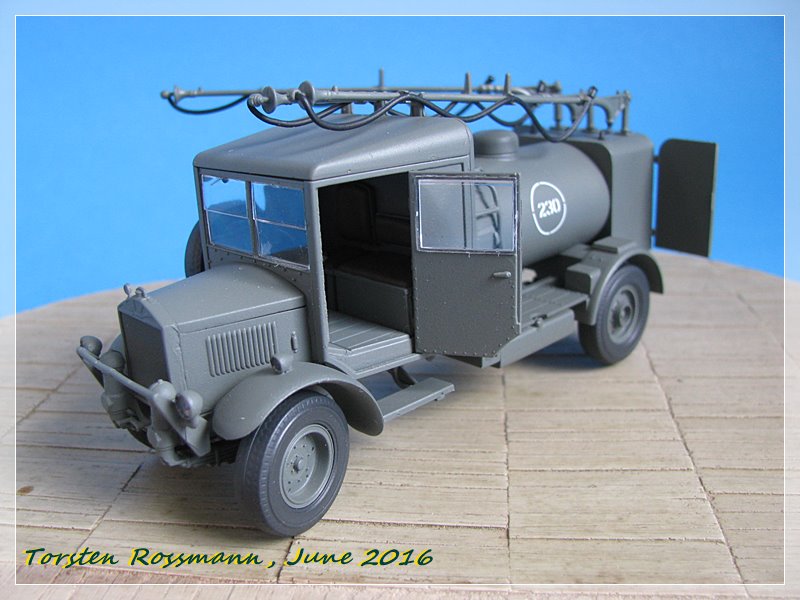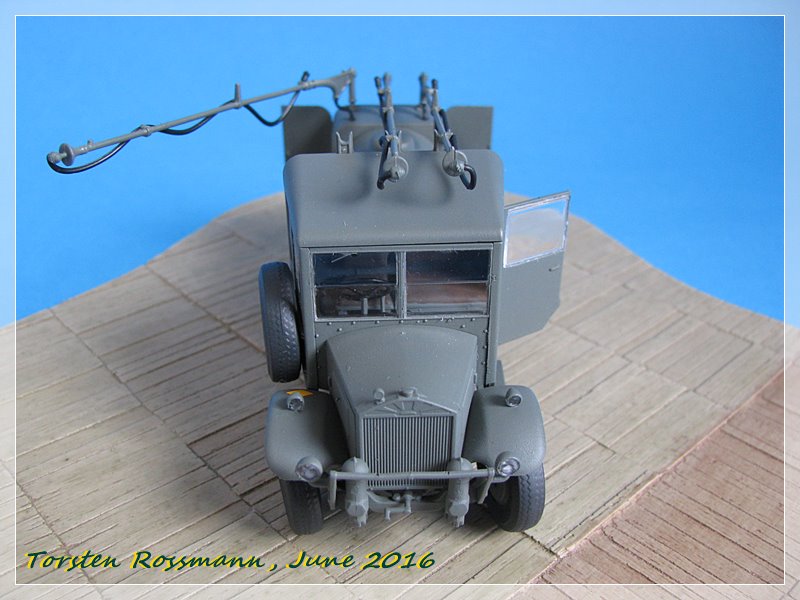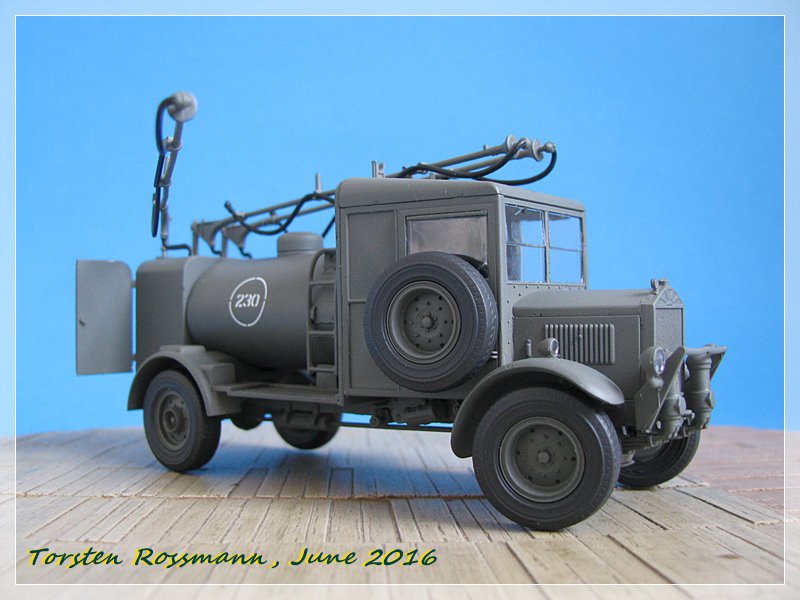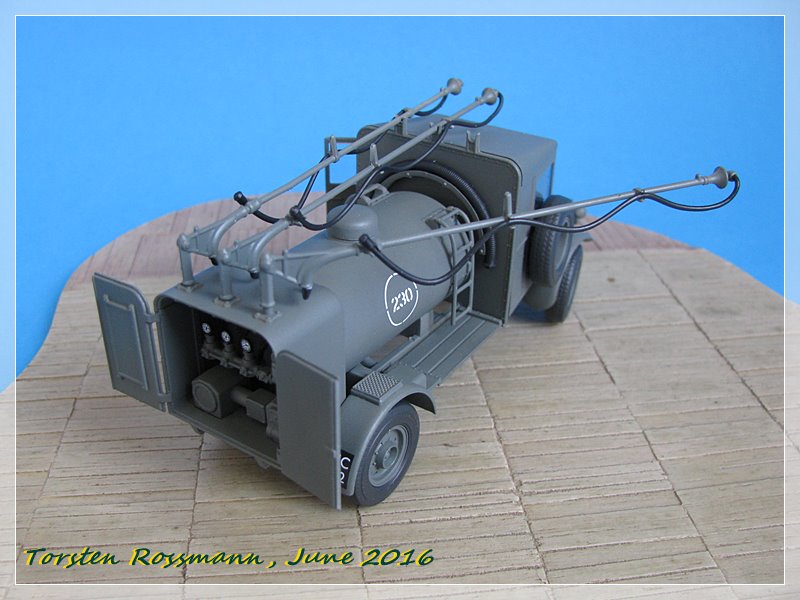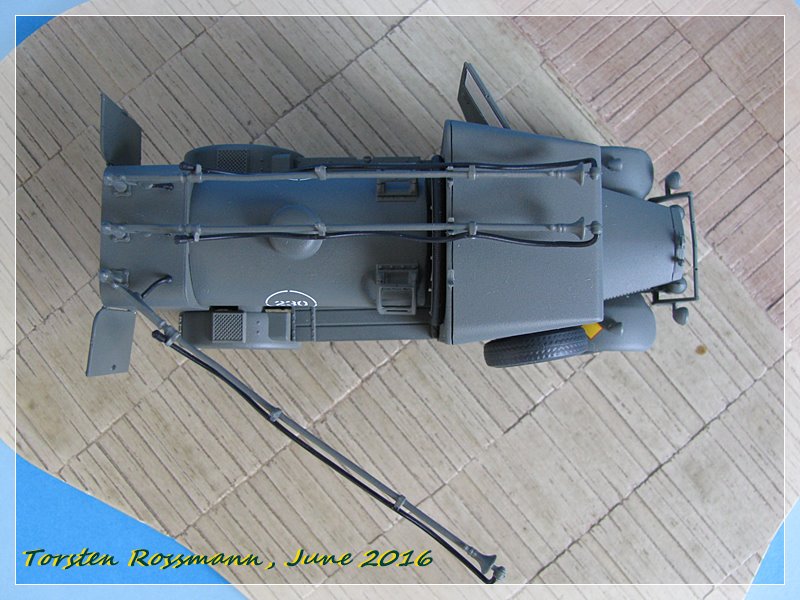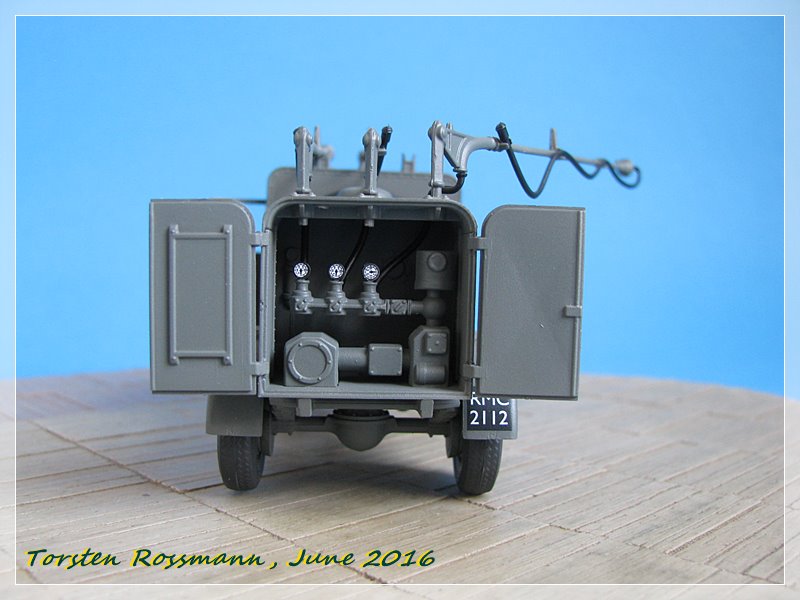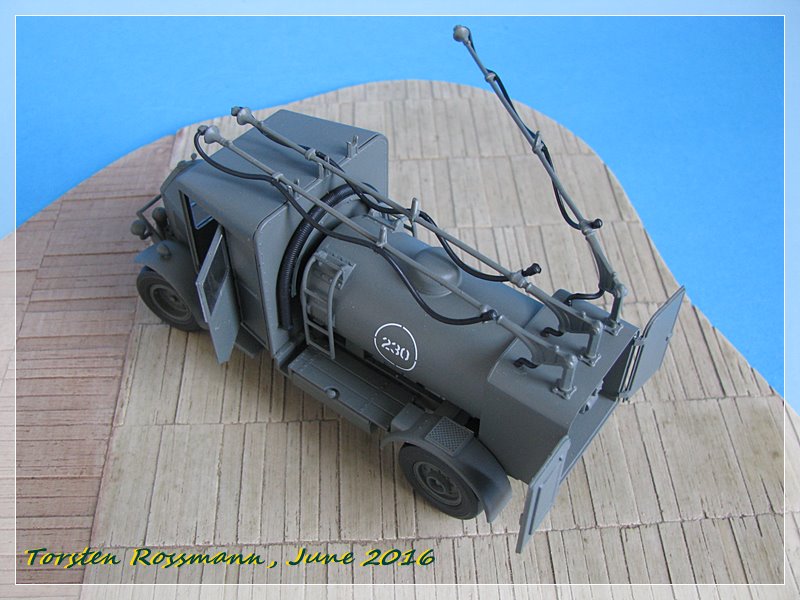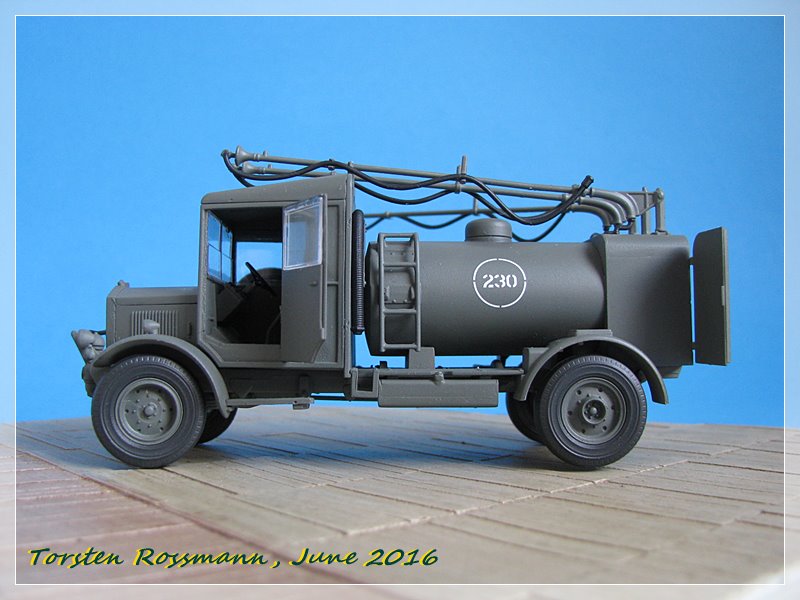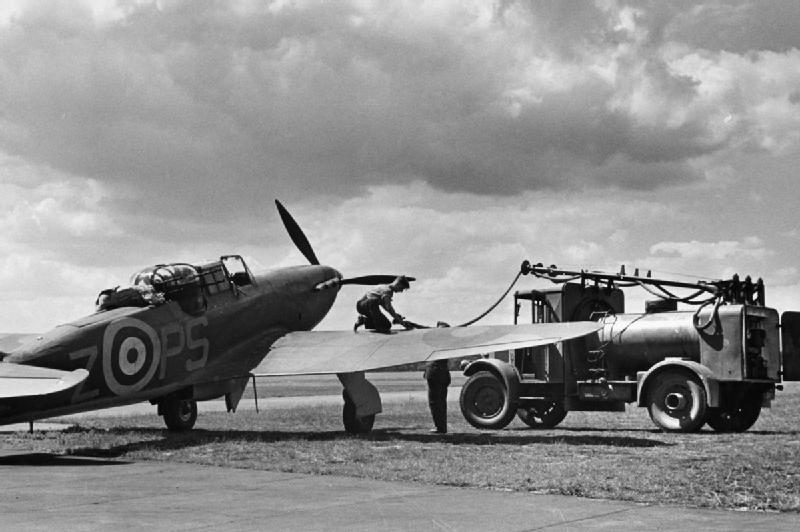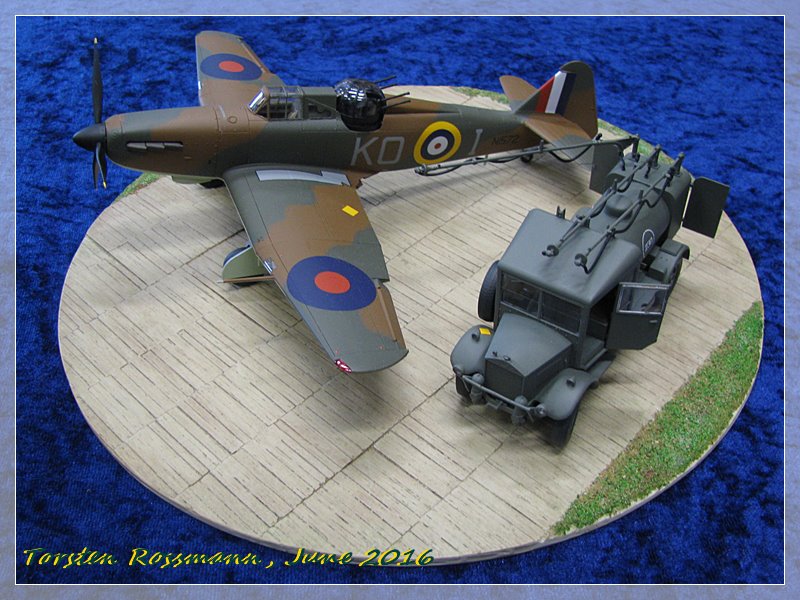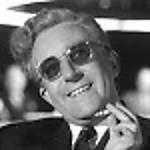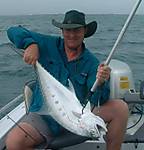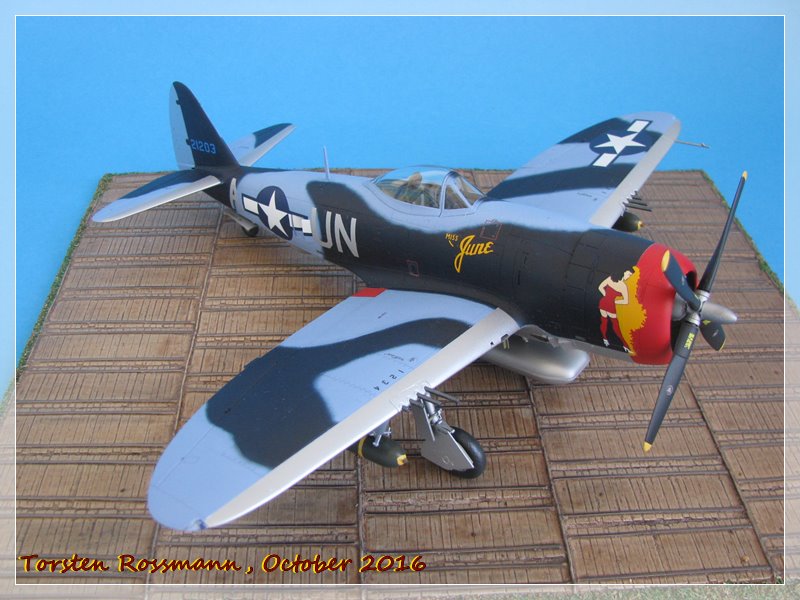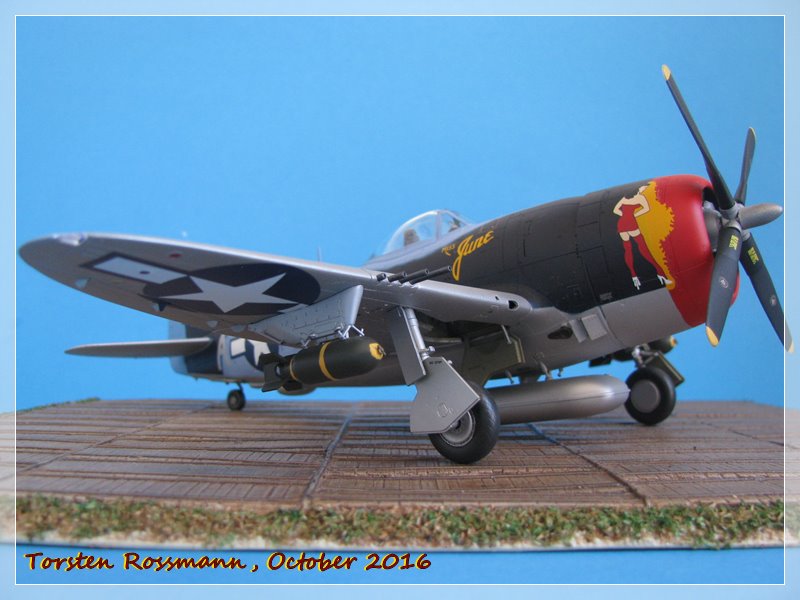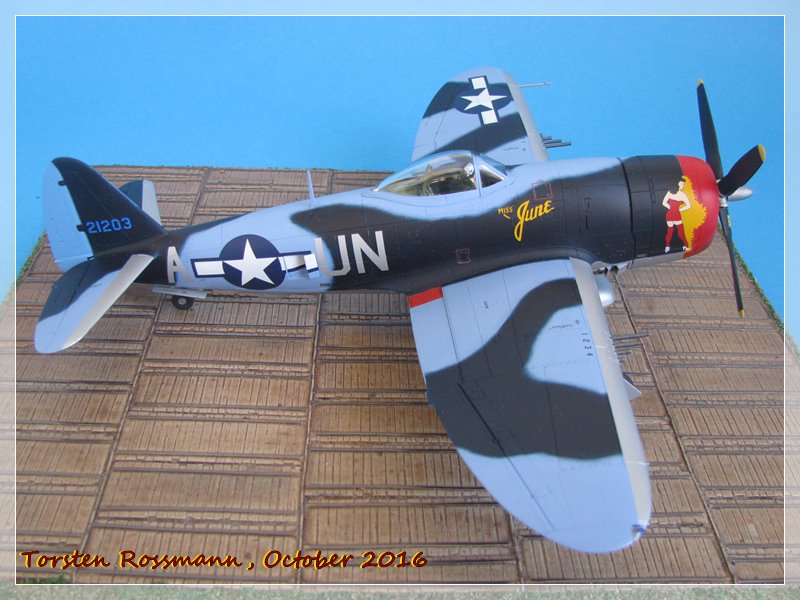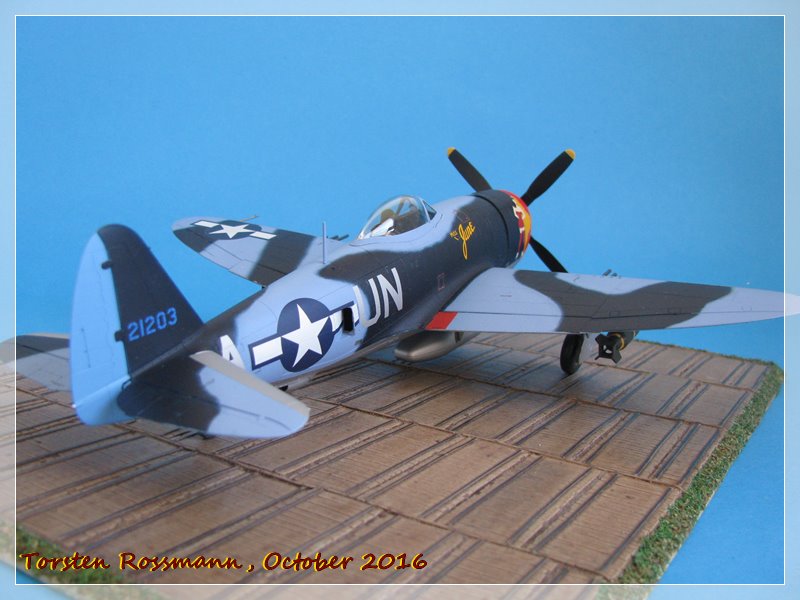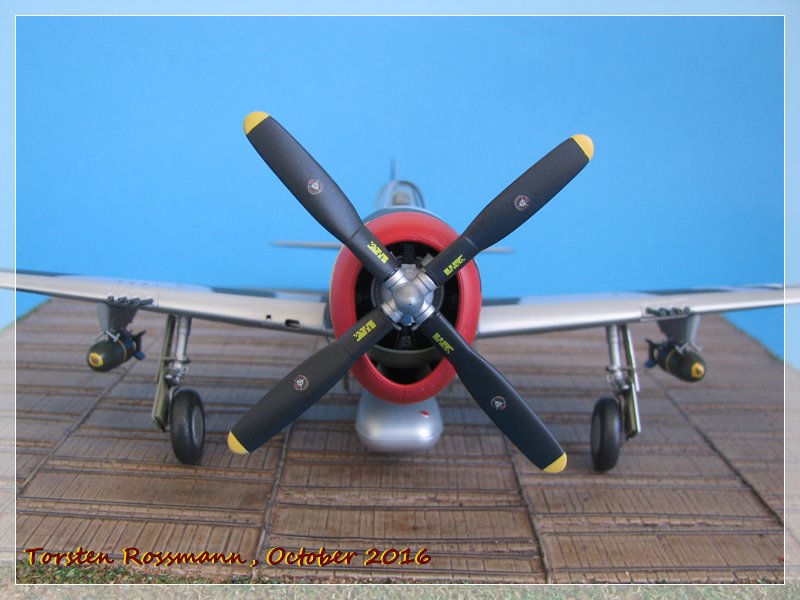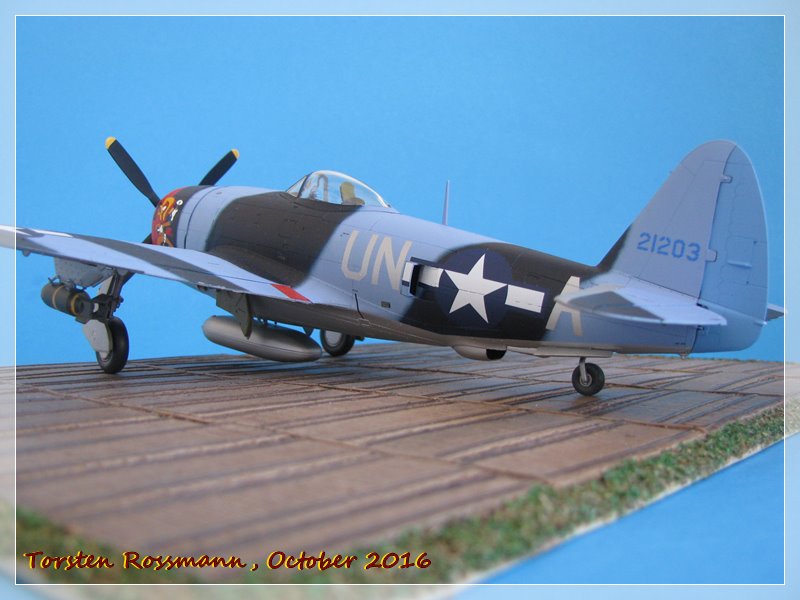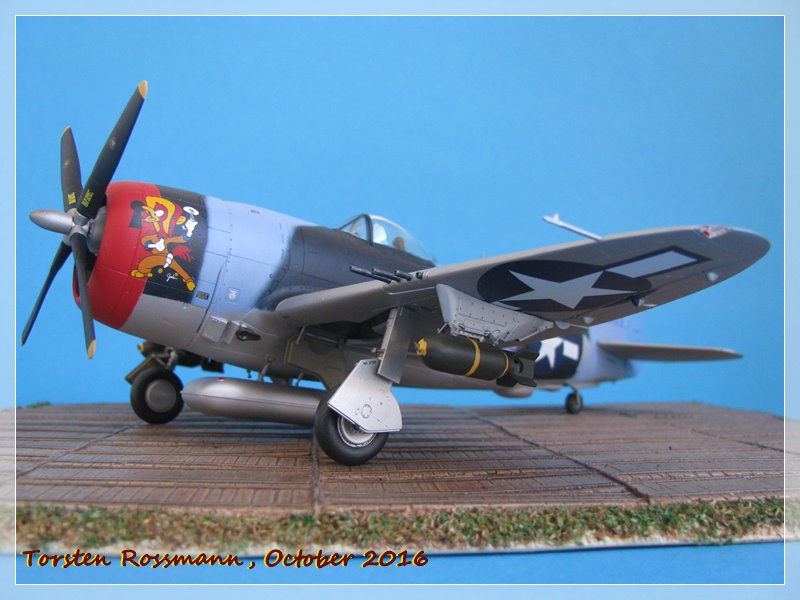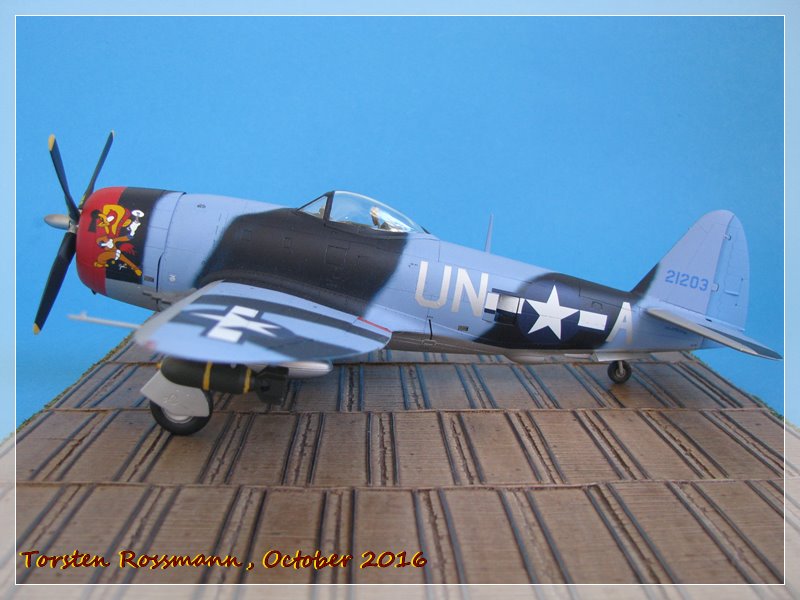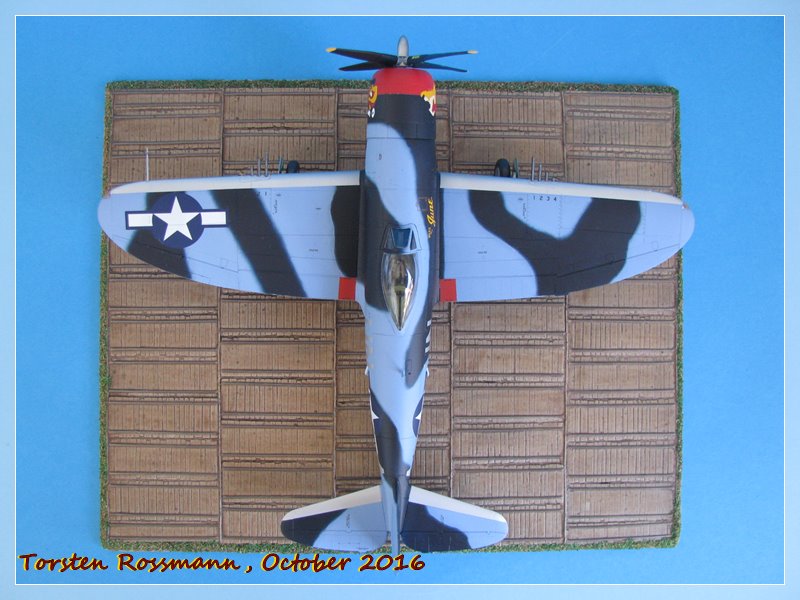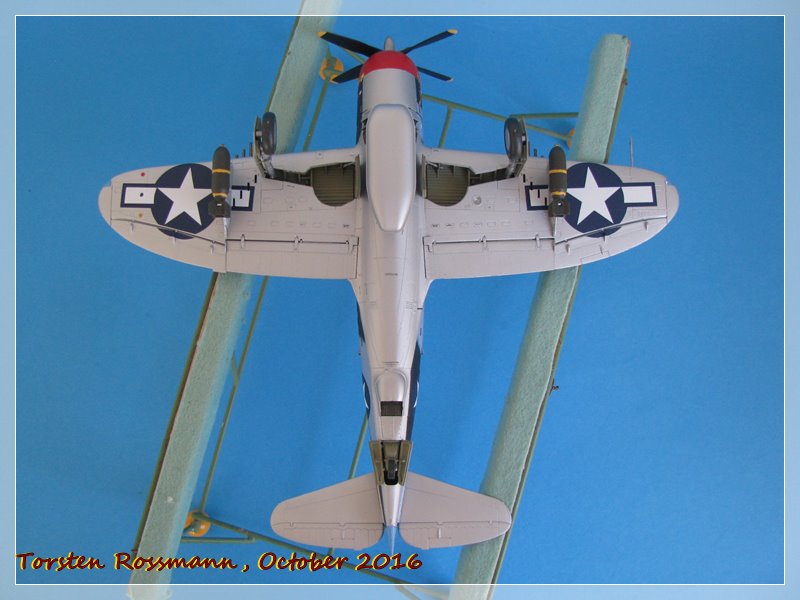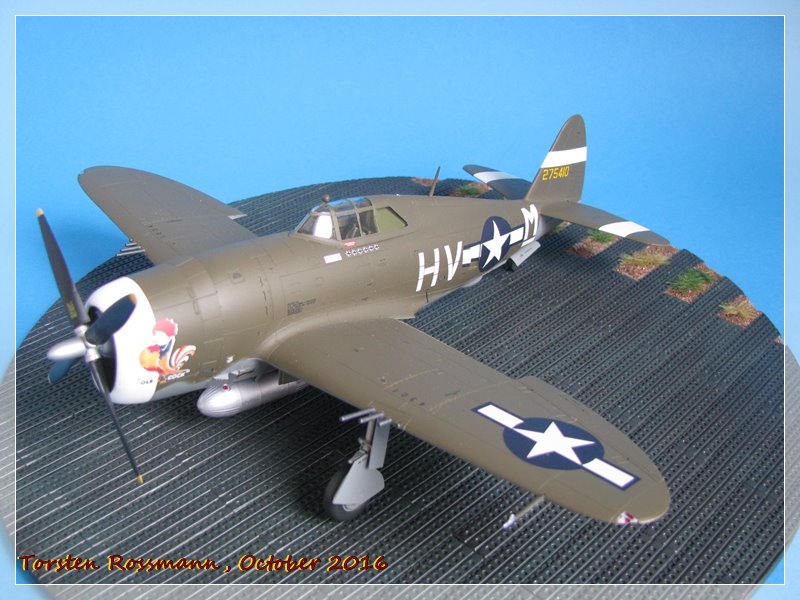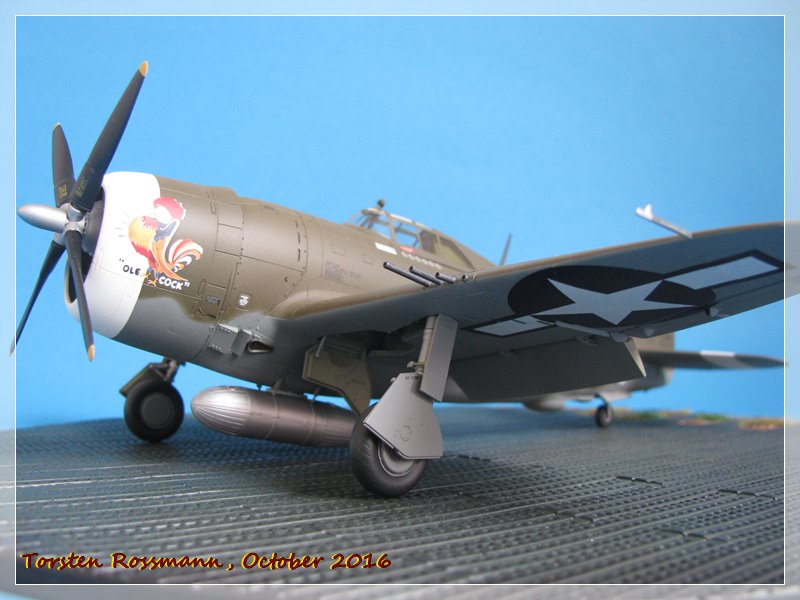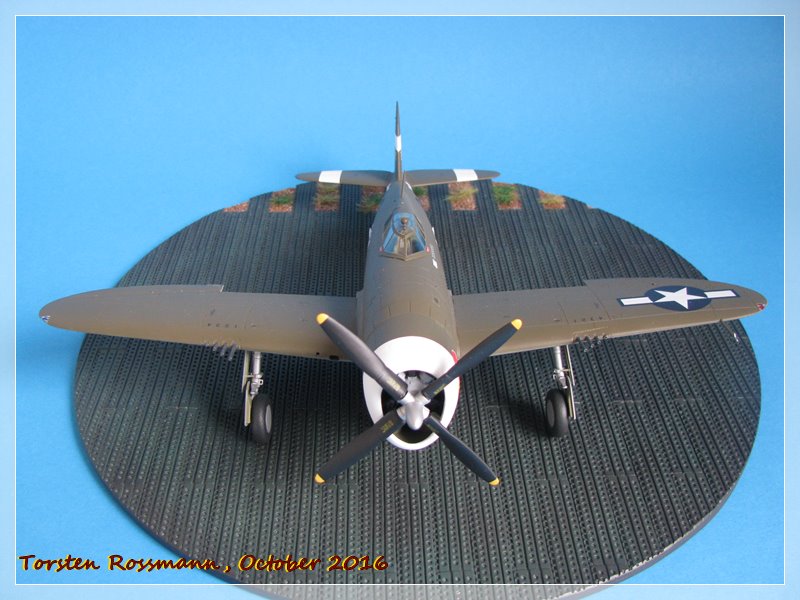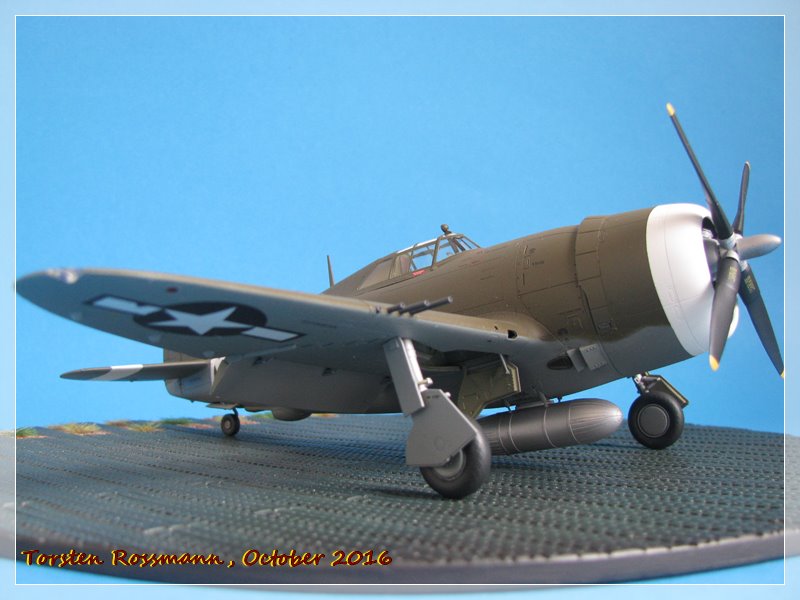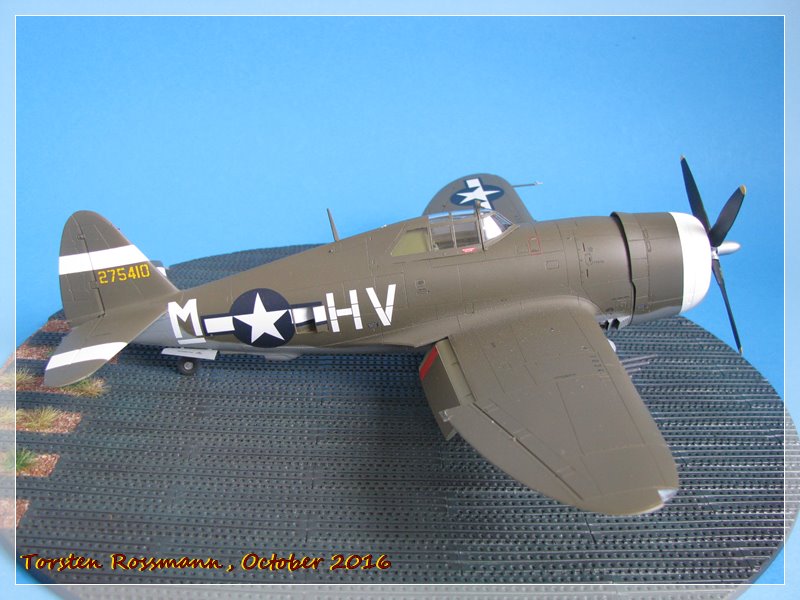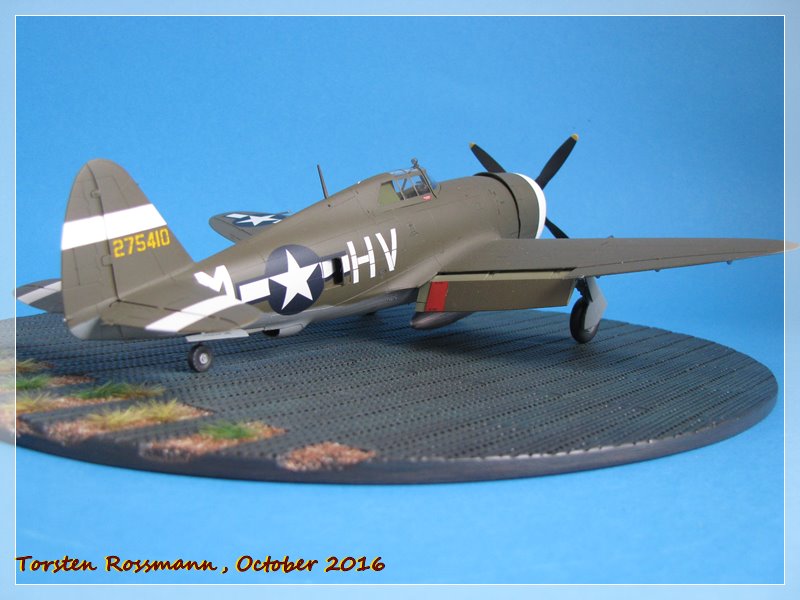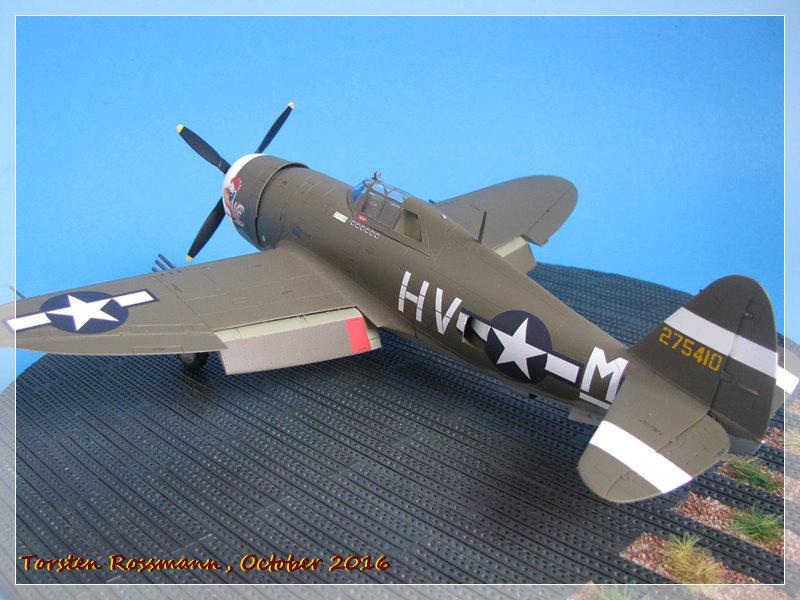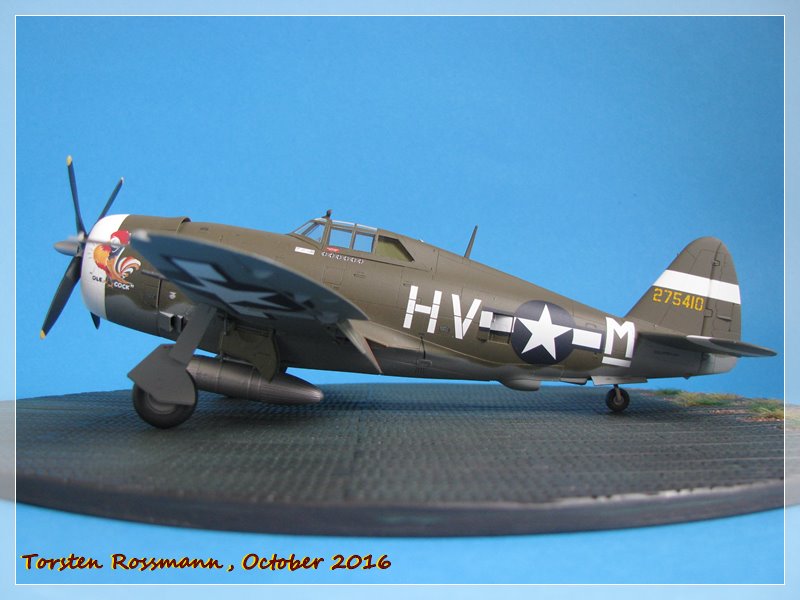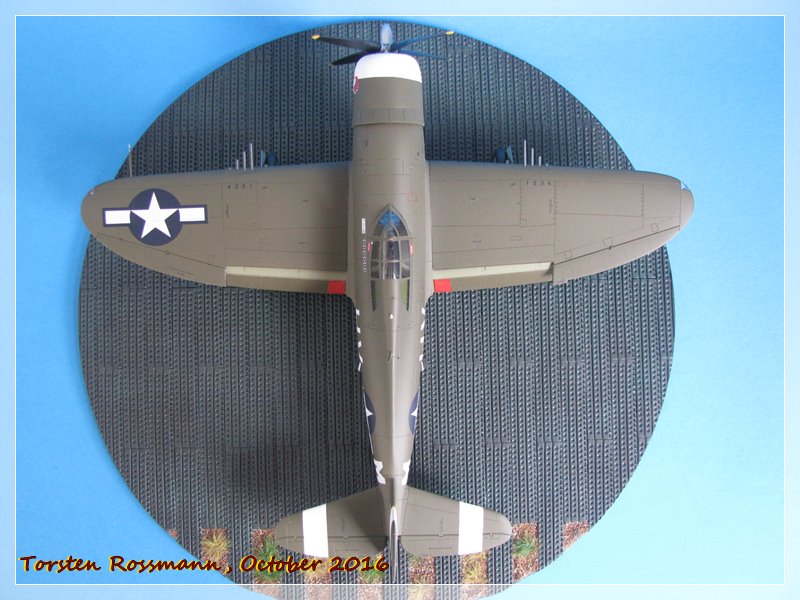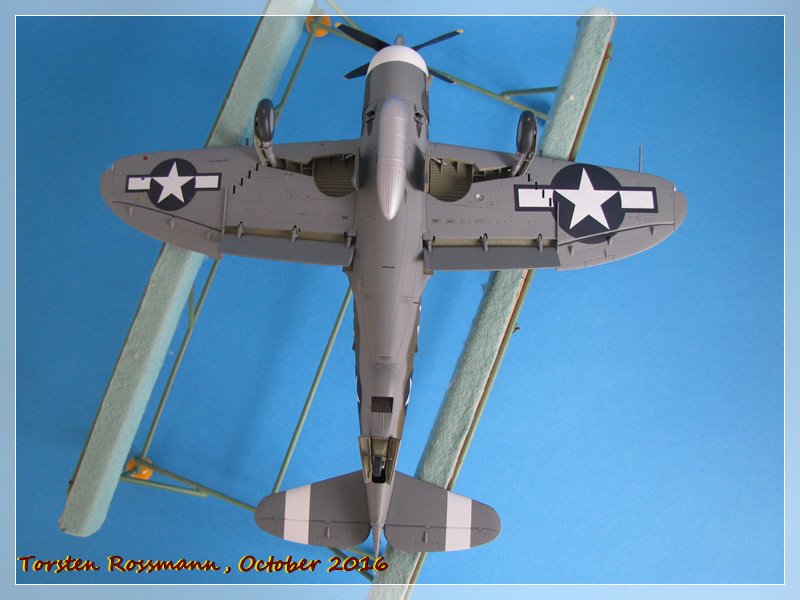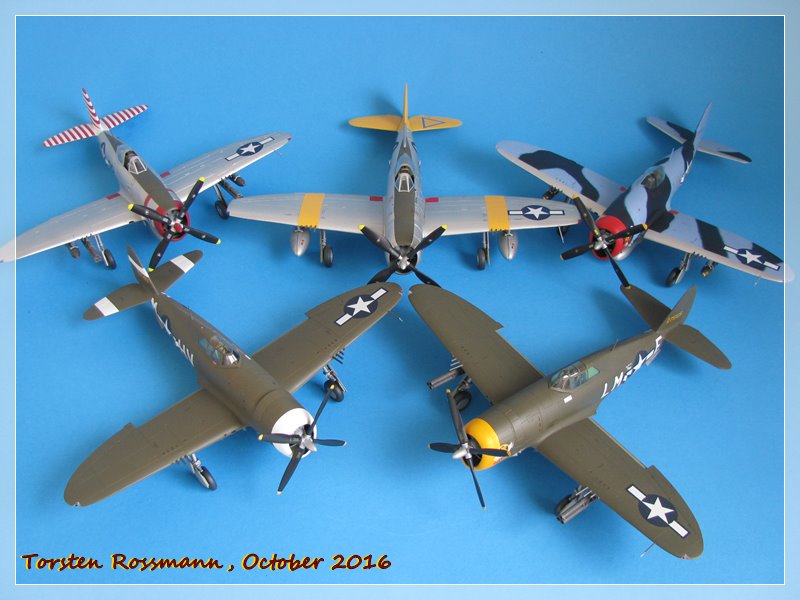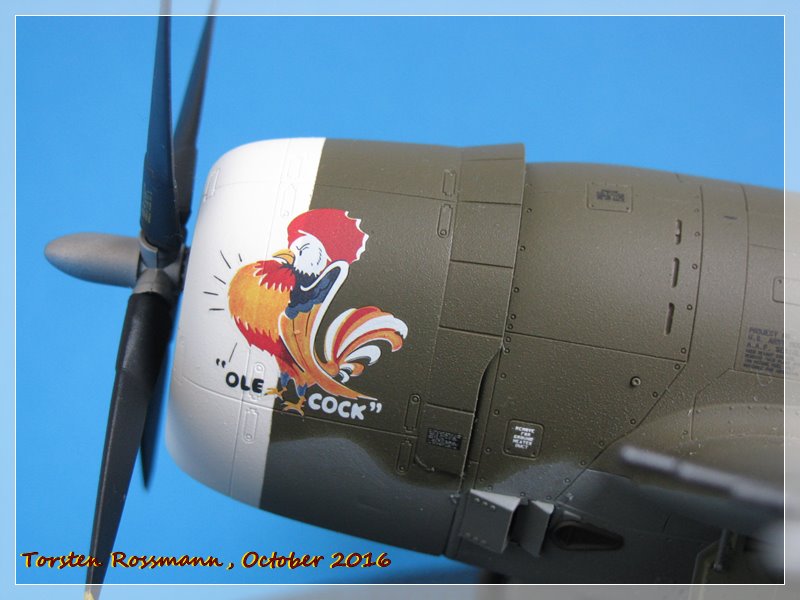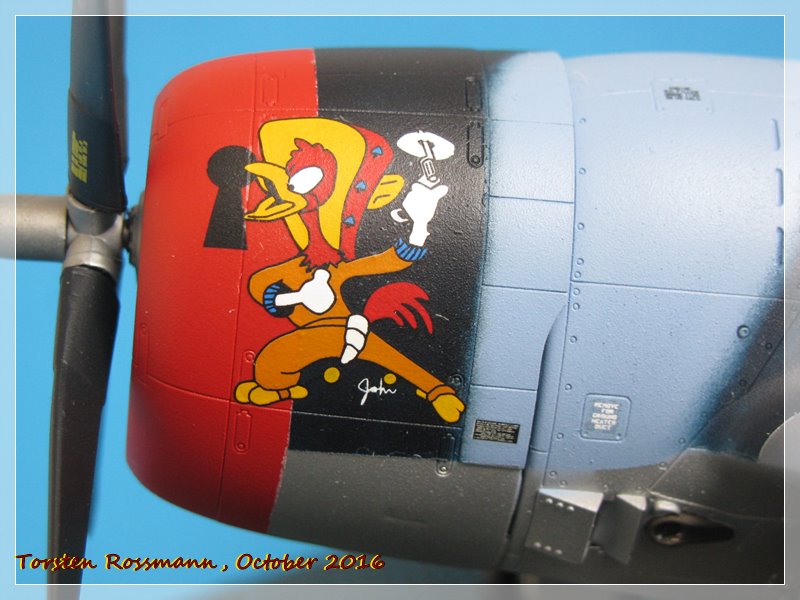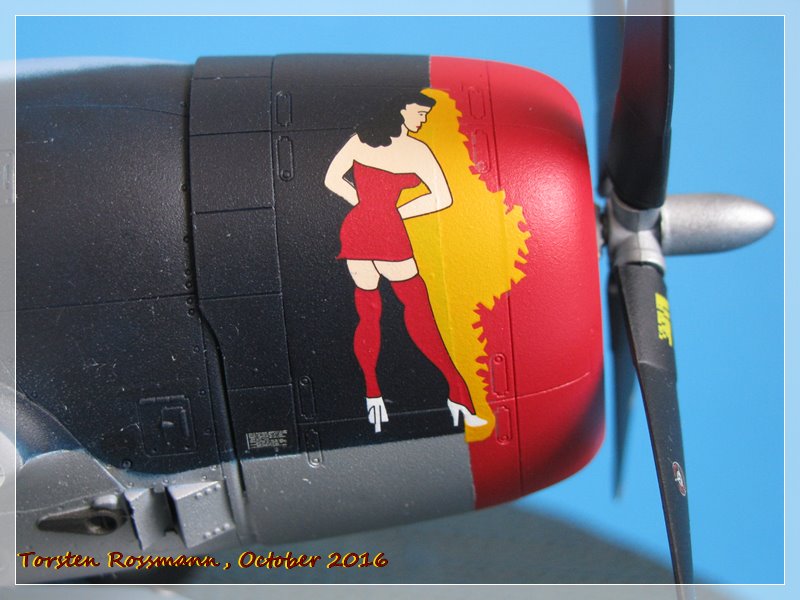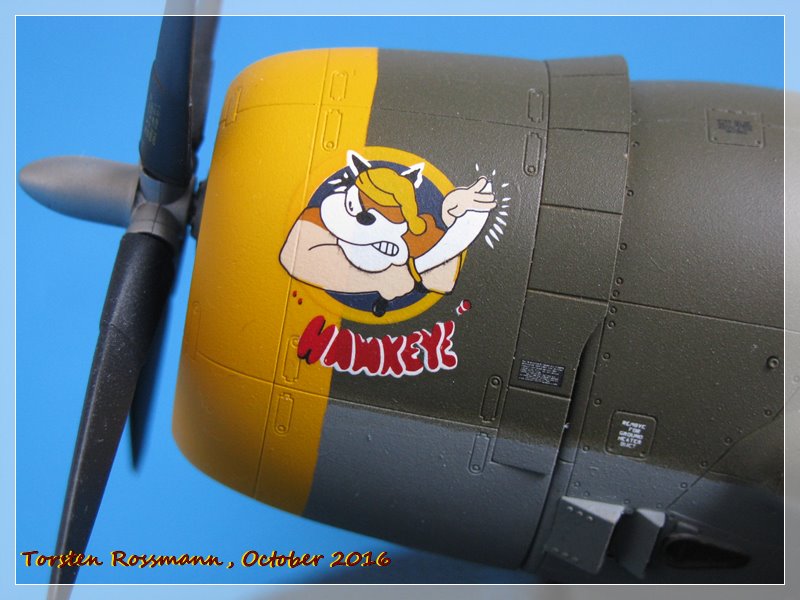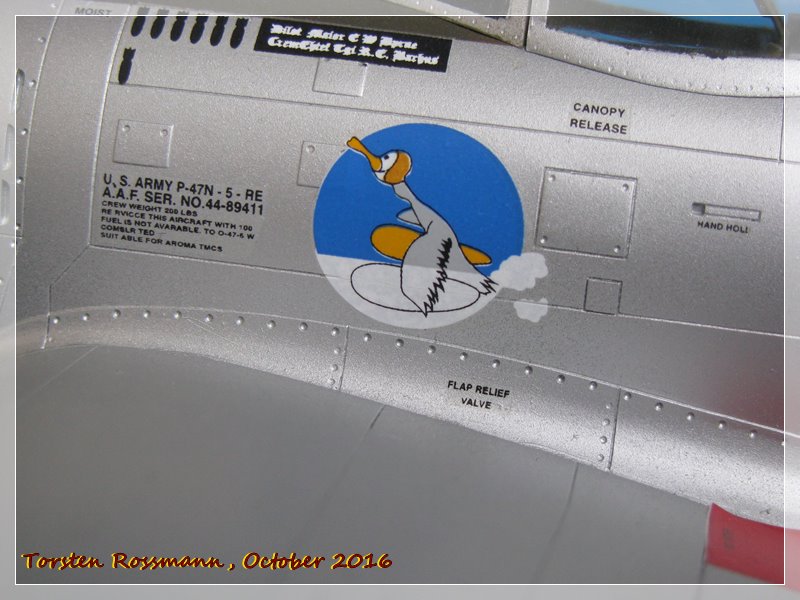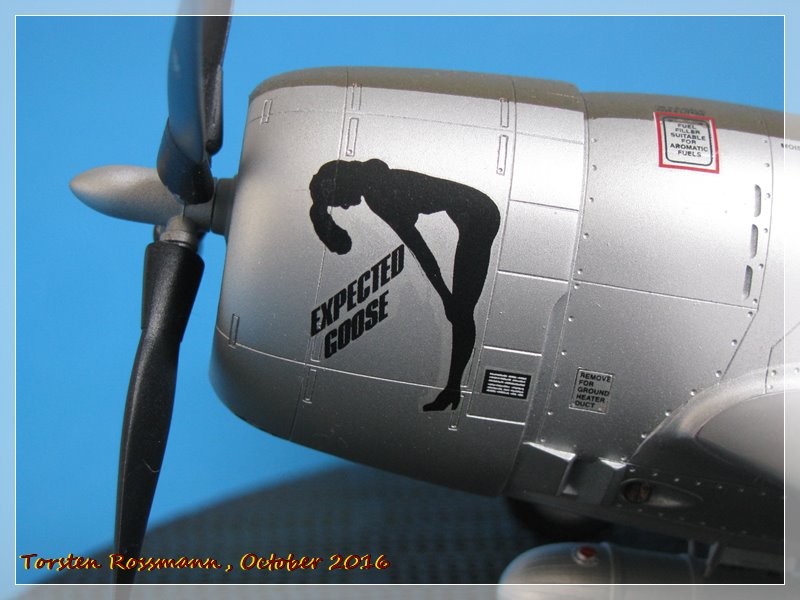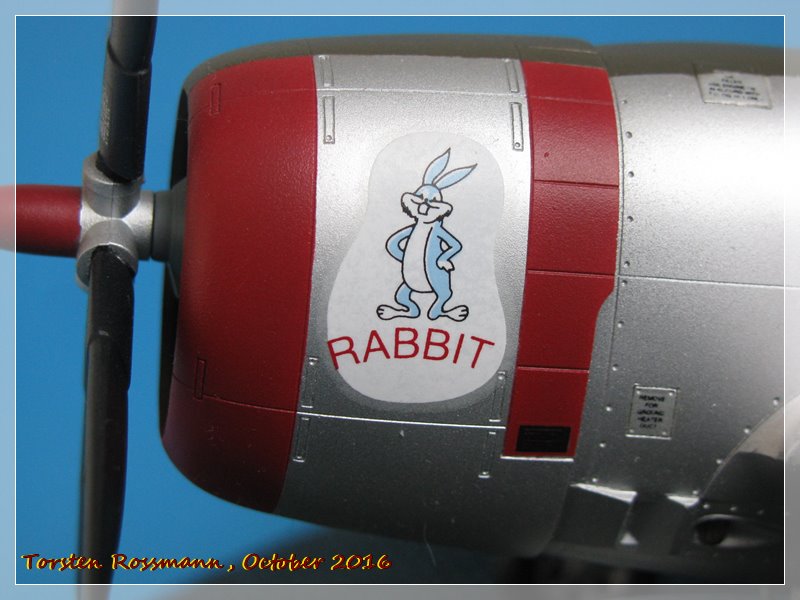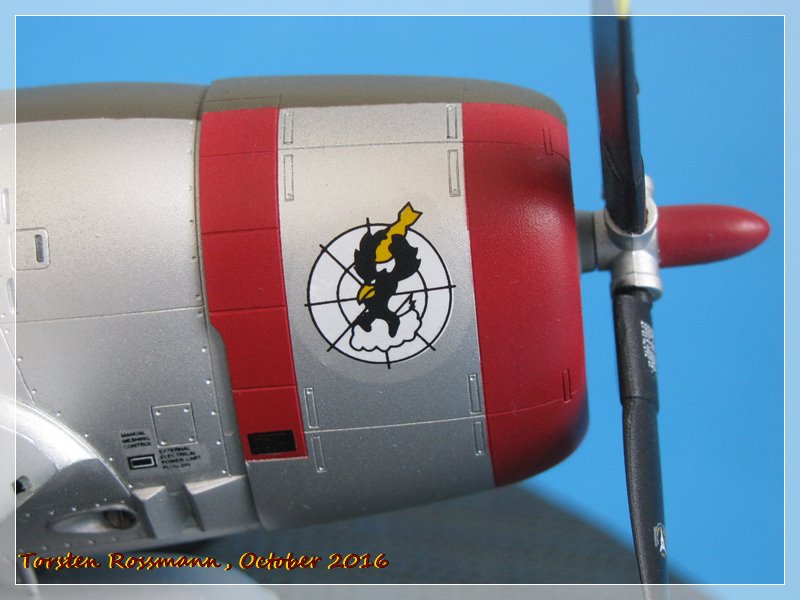While Gary goes new ways in modelling his superb
quarterscale B-29, I have build an aircraft which the Superfortresses encountered quite often in the last year of WW2. Today I want to show you my new Kawasaki Ki-61 "Hien" from Hasegawa in 1/48 ....

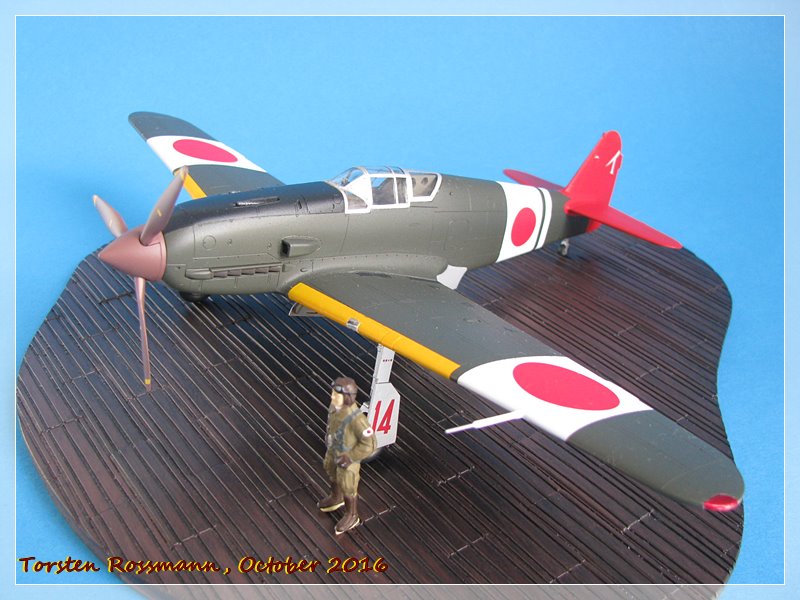
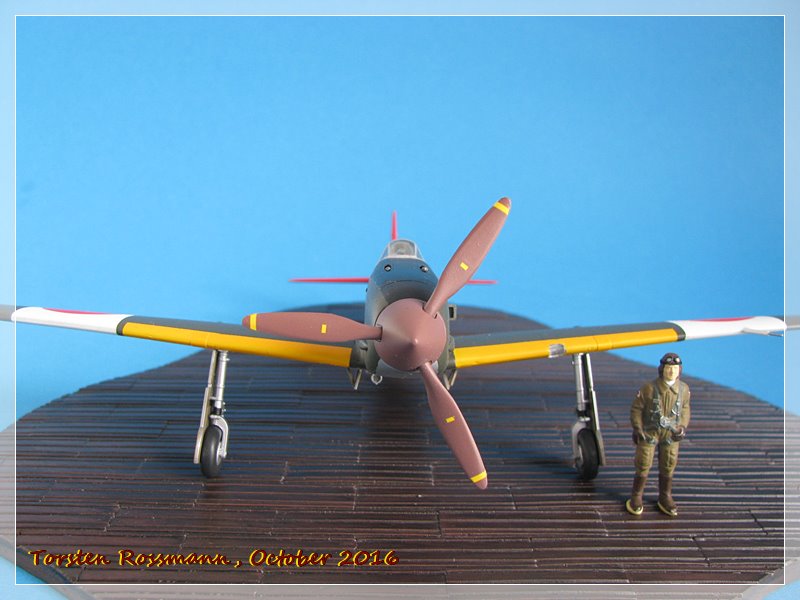
.... the Ki-61 was developed by Kawasaki's famous designer Takeo Doi, who was also responsable for the Ki-45 "Toryu". It was the only mass produced Japanese fighter using a liquid cooled inline engine. It was introduced to the IJAAF in 1942 and first shots in anger were fired in April 1942 when 2 prototypes attacked the B-25's of the Doolittle Raid over Tokyo. But they were ineffective as they had only training ammo aboard. First unit to be equipped with the "Hien" was the 68. Sentai, which had tough fights over New Guinea against the allied air forces. The Ki-61 was powered by a Kawasaki Ha-40 engine with 1175 hp, which was a licensed build german Daimler Benz DB 601 A. But it never was as reliable as the german original, especially the cooling system was prone. Nevertheless about 2600 Ki-61 were produced. It had a maximum speed of nearly 600 km/h at 5000 meters and a service ceiling of 12000 meters. The climb rate was 714 meters per minute or 7 minutes for 5000 meters. The range was 600 km without and 1800 km with external tanks. The usual armament were four 12,7 mm machine guns (2 in the wings and 2 in the fuselage) but that depended on the version and the use of operation. Today there are still 3 fuselages left in museums around the world in more or less good/bad conditions ....
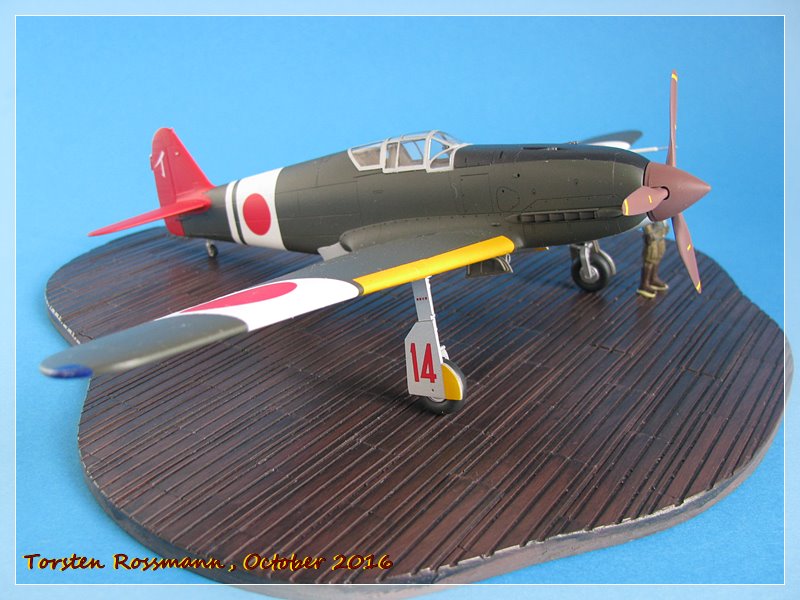
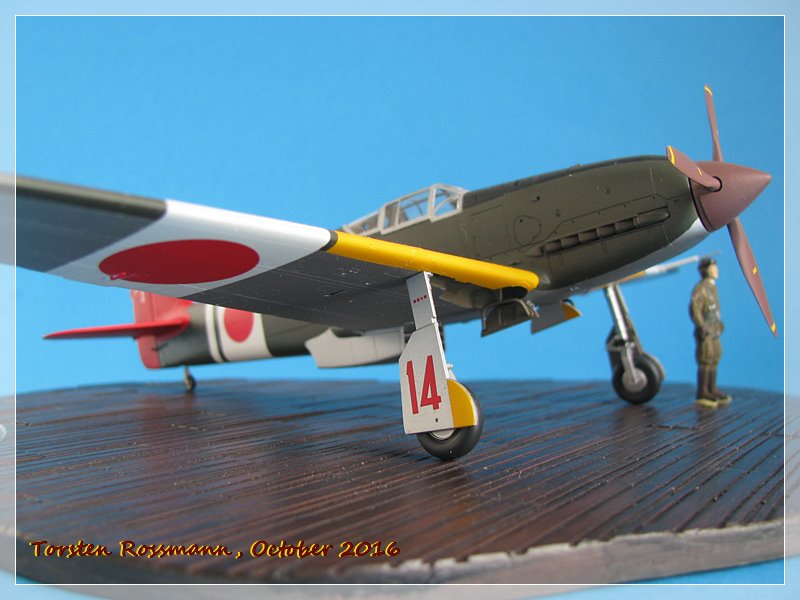
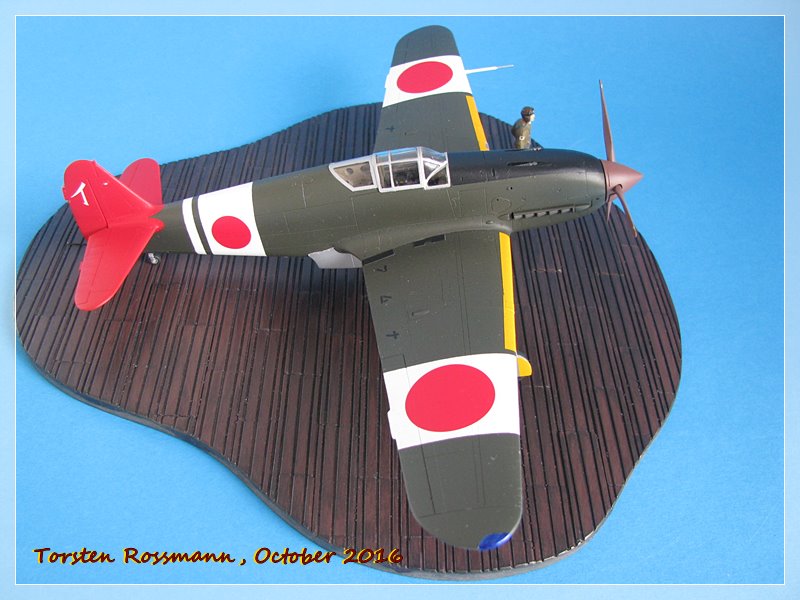
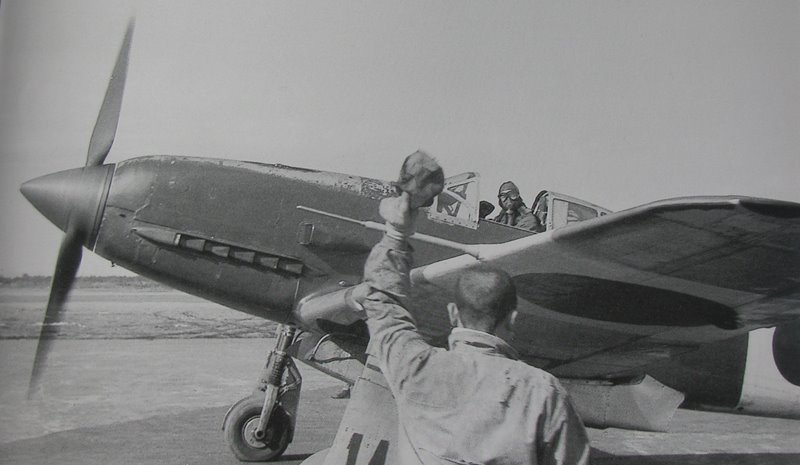
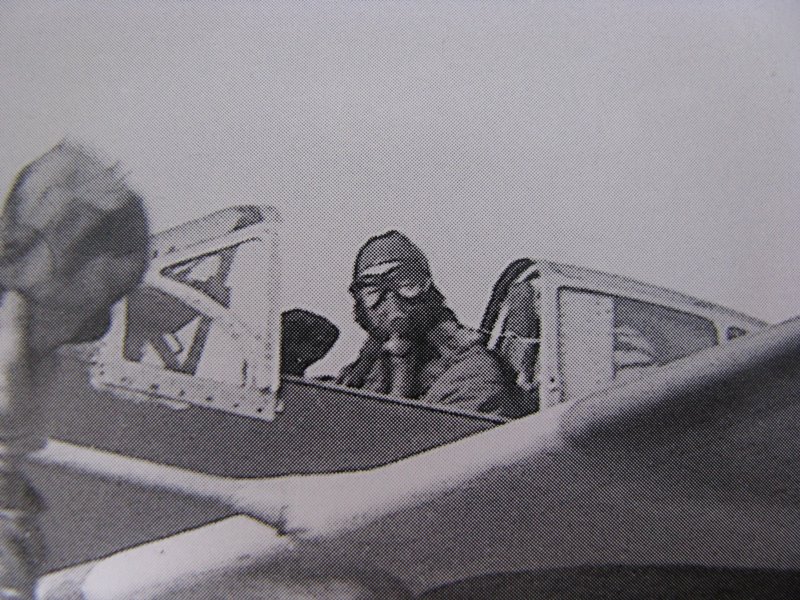
.... I have build aircraft "14" of the very famous 244. Sentai, based at Chofu Airfield in February 1945 during the defense of the japanese mainland. It was flown by the remarkable Gunso (Sergeant) Masao Itagaki, who belonged to the Shinten Sekutai, an air-to-air ramming unit within the 244. Sentai. Itagaki was one of the rare double-Bukosho recipents. The Bukosho was the highest military medal of Japan during WW2, comparable with the Victoria Cross or the Medal Of Honor. On the 3. December 1944 Itagaki rammed the B-29 "Long Distance T-49" of the 498th BG and bailed out of his damaged fighter without a scratch. He won his first Bukosho for this attack. On the 27. January 1945 he rammed another B-29 and escaped again by parachute unhurt to get his second Bukosho for this action. From March to May 1945 he flew Kamikaze escort missions to Okinawa. Luck stayed at his side and he survived the war as one of only 2 known double Bukosho recipents. At the end of the war Itagaki was only 19 years old .... Unfortunatly his post-war life is unknown to me. I found this amazing shot of him sitting in his "14" ready to take off in Osprey's "Ki-61 Aces" ....
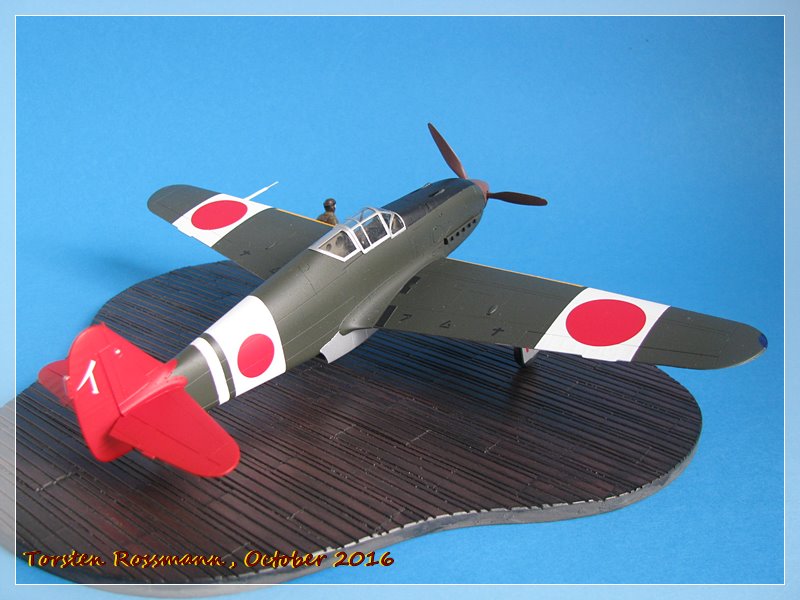
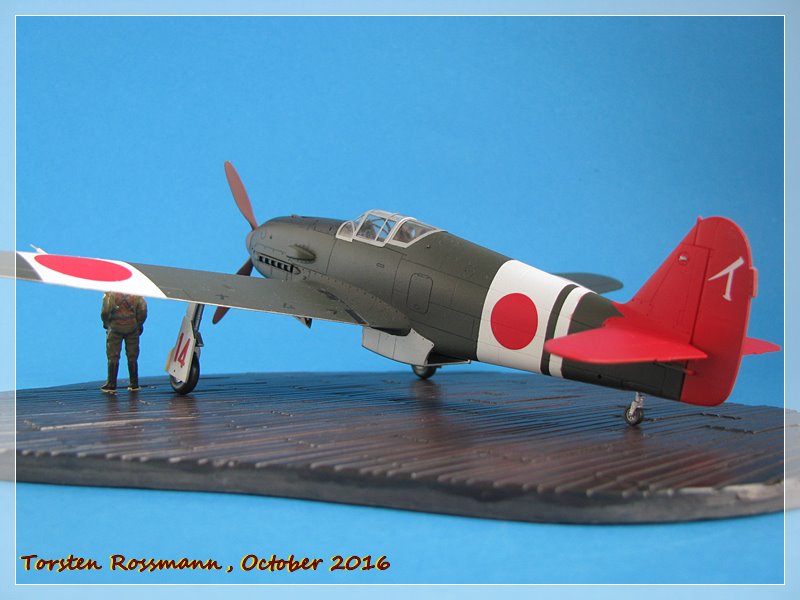
.... Hasegawa came out with this limited edition in 2010 and after recently reading the story of the pilot I knew instantly which version of the 3 choices I want to build. The kit is from the 1990's and has some issues. So there is some filler needed on both wing roots, furthermore a lot of sanding has to be done. I read that pilots often removed the wing guns to be lighter and more manouvrable in the heights of the B-29's. Some even had only one machine gun in the fuselage. I have looked at the 2 photos I have of "14" and decided to close the gun openings in the wings with putty. Not sure if this is correct but it might have been so. After painting this area I was not satisfied with how it looked and decided to cover the openings "Spitfire-like" with a piece of Tamiya Tape painted yellow. Maybe the groundcrews in those days have also used Tamiya Tape

The paints on this bird all come from Revell. I recently read that the late war brownish-green of the japanese fighters would come close to RAL 6014 Gelboliv. Which is a bit funny as that's the paint on German Bundeswehr vehicles until the late 1970's. So I have used Yellow Olive 42, White 301, Black 302 and Red 36 for the upper side, Silver 90 for the underside, Yellow 310 for the leading edges of the wings, Red-Brown 83 for the propeller and Brown 87 for the interior. Final coating was again made with Clear Flat Varnish from Marabu.This bird gave me quite a tough masking job, especially those curves on the red tail were difficult. Parafilm didn't work well enough here, so I used small pieces of Kip Tape which surprisingly did a good job here. Masking the canopy was done with Eduard EX055. All decals are taken from the kit. The japanese character on the rudder means "I" and stands here of course for Itagaki. As ususal this model is build oob and not weathered ....
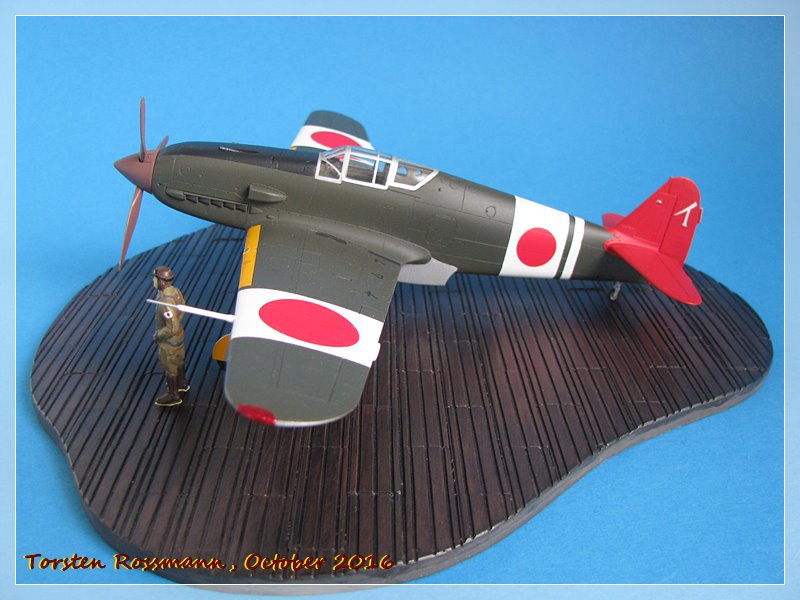
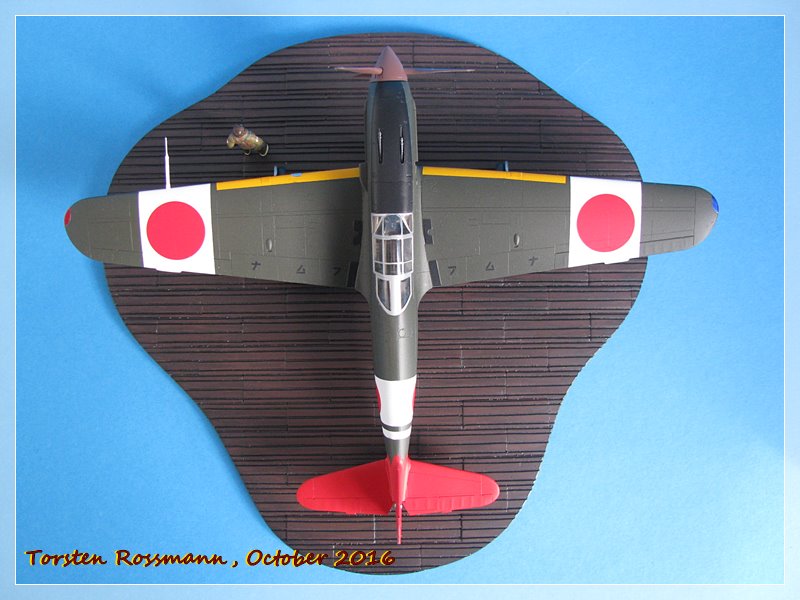
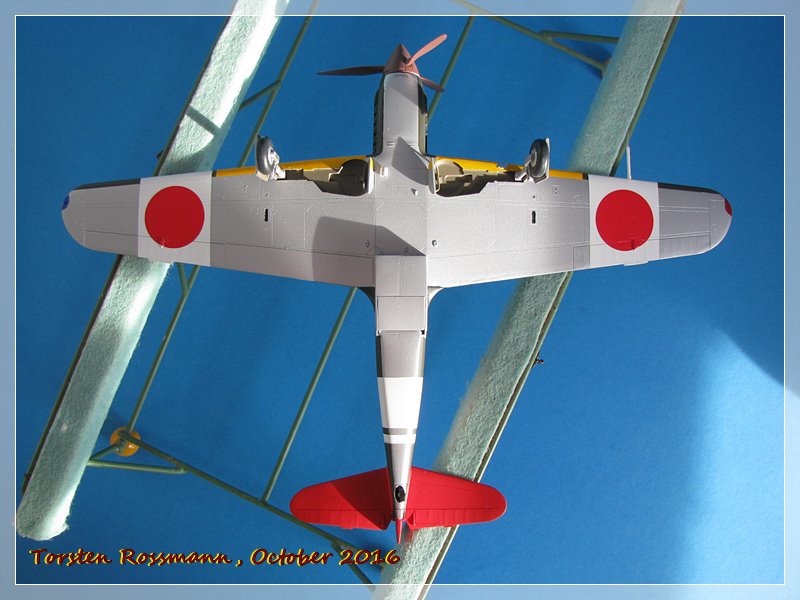
.... again I say "domo arigato" for watching and hope you've enjoyed this little walk around with me. There are only very few videos on Youtube about the Ki-61, but I found a short war time japanese propaganda
film of the 244. Sentai you might like to see.
Happy modelling!
Torsten


